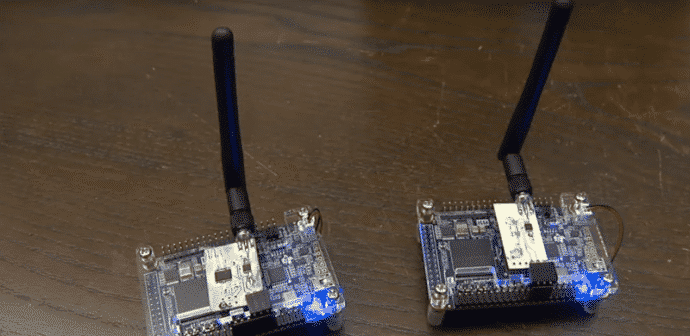Researchers create super efficient ‘Passive Wi-Fi’ which consumes 10,000 times less power than conventional methods
Using Wi-Fi consumes a significant amount of energy, draining the batteries on all those connected devices. A team of computer scientists and electrical engineers from University of Washington have demonstrated that it is possible to generate Wi-Fi transmissions using 10,000 times less power than conventional methods.
They have created what they are calling a “Passive Wi-Fi” system that uses almost no power at all by transferring typically power-consuming analog activity to a single hub plugged into the wall. It also also consumes 1,000 times less power than existing energy-efficient wireless communication platforms, such as Bluetooth Low Energy and Zigbee.
“We wanted to see if we could achieve Wi-Fi transmissions using almost no power at all,” said Shyam Gollakota, assistant professor of computer science and engineering from the University of Washington. “That’s basically what Passive Wi-Fi delivers. We can get Wi-Fi for 10,000 times less power than the best thing that’s out there.”
“Passive Wi-Fi” can for the first time transmit Wi-Fi signals at bit rates of up to 11 mbps (megabits per second) that can be decoded on any of the billions of devices with Wi-Fi connectivity. While the speed of 11 mbps is lower than the maximum Wi-Fi speeds, but it is still a whole lot faster than Bluetooth.
Besides saving battery life on today’s devices, wireless communication that uses almost no power will help enable an “Internet of Things” reality where household devices and wearable sensors can communicate using Wi-Fi without worrying about power.
“All the networking, heavy-lifting and power-consuming pieces are done by the one plugged-in device. The passive devices are only reflecting to generate the Wi-Fi packets, which are a really energy-efficient way to communicate,” explained co-author Vamsi Talla, electrical engineering doctoral student.
The team basically decoupled the digital and analog operations involved in radio transmissions to achieve such low-power Wi-Fi transmissions. In the last 20 years, the digital side of that equation has become extremely energy efficient, but the analog components still consume a lot of power.
The Passive Wi-Fi architecture assigns the analog, power-intensive functions – like producing a signal at a specific frequency — to a single device in the network that is plugged into the wall.
An array of sensors produces Wi-Fi packets of information using very little power by simply reflecting and absorbing that signal using a digital switch.
The technology has been successfully demonstrated by the team on the campus at the University of Washington, and it can reportedly connect to any kind of Wi-Fi-enabled device up to 30 metres away or 100 feet, and through walls.
“Our sensors can talk to any router, smartphone, tablet or other electronic device with a Wi-Fi chipset,” one of the team, Bryce Kellogg, explained in a press release. “The cool thing is that all these devices can decode the Wi-Fi packets we created using reflections so you don’t need specialised equipment.”
The technology can enable entirely new types of communication that haven’t been possible because energy demands have outstripped available power supplies. It could also simplify our data-intensive worlds.
The journal MIT Technology Review has named the technology as one of the 10 breakthrough technologies of 2016.
A paper describing the team’s research is due to be presented next month at the 13th USENIX Symposium on Networked Systems Design and Implementation in California. The research was funded by the National Science Foundation, the University of Washington and Qualcomm.
